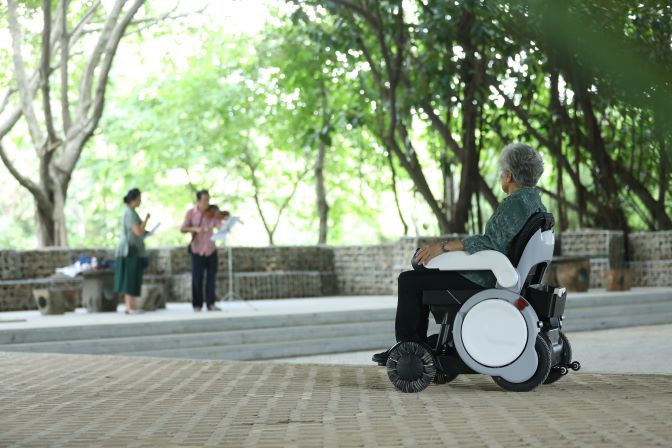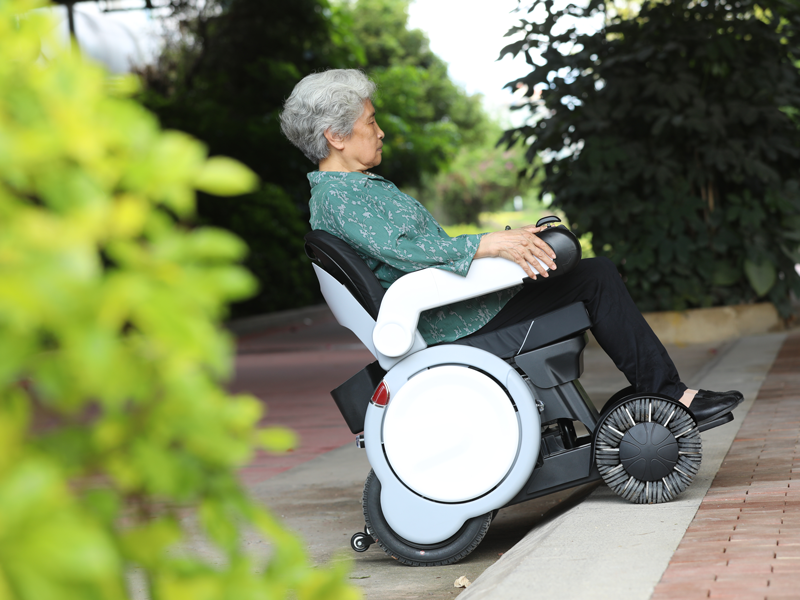Wheelchairs, which have become an important tool in the daily lives of many elderly people with limited mobility, not only provide mobility, but also make it easier for family members to move and care for the elderly. Many people often struggle with the price when selecting a wheelchair. In fact, there is a lot to learn about choosing a wheelchair, and choosing the wrong wheelchair can hurt your body.

Wheelchairs focus on comfort, practicality, safety, selection can focus on the following six aspects.
Seat width: After sitting on the wheelchair, there should be a certain gap between the thighs and the armrests, 2.5-4 cm is appropriate. If it is too wide, it will stretch too much when operating the wheelchair, easily fatigued, and the body is not easy to maintain balance. Moreover, when resting in the wheelchair, hands cannot be comfortably placed on the armrests. If the gap is too narrow, it is easy to wear the skin on the buttocks and outer thighs of the elderly, and it is not convenient to get on and off the wheelchair.
Seat length: After sitting, the best distance between the front end of the cushion and the knee is 6.5 cm, about 4 fingers wide. The seat is too long will top the knee fossa, compressing the blood vessels and nerve tissue, and will wear the skin; but if the seat is too short, it will increase the pressure on the buttocks, causing pain, soft tissue damage and pressure sores.
Backrest height: Normally, the upper edge of the backrest should be about 10 cm below the armpit. The lower the backrest, the greater the range of motion of the upper part of the body and arms, the more convenient the activity. However, if it is too low, the support surface becomes smaller and will affect the stability of the torso. Therefore, elderly people with good balance and light activity disorders can choose a wheelchair with a low backrest; on the contrary, they can choose a wheelchair with a high backrest.
Armrest height: natural drop of the arms, forearms placed on the armrest, elbow joint bending about 90 degrees is normal. When the armrest is too high, the shoulders are easily fatigued, easy to cause skin abrasions on the upper arms during activities; if the armrest is too low, not only feel uncomfortable at rest, in the long run, may also lead to spinal deformation, chest pressure, resulting in breathing difficulties.
Seat and pedal height: When both lower limbs of the elderly are placed on the pedal, the knee position should be about 4 cm above the front edge of the seat. If the seat is too high or the footrest is too low, both lower limbs will be suspended and the body will not be able to maintain balance; conversely, the hips will bear all the gravity, causing soft tissue damage and strain when operating the wheelchair.
Types of wheelchairs: leisure manual wheelchairs, for the elderly with less physical impairment; portable wheelchairs, for the elderly with limited mobility for short country trips or visits to public places; free reclining wheelchairs, for the elderly with serious illnesses and long-term reliance on wheelchairs; adjustable backrest wheelchairs, for the elderly with high paraplegia or who need to sit in wheelchairs for a longer period of time.
Elderly people in wheelchairs should wear seat belts.
As a common care aid for the elderly, wheelchairs must be used according to the operating specifications. After purchasing a wheelchair, you need to read the product manual carefully; before using the wheelchair, you should check whether the bolts are loose, and if they are loose, they should be tightened in time; in normal use, you should check every three months to ensure that all parts are good, check the various nuts on the wheelchair, and if you find wear, you need to adjust and replace them in time. In addition, regularly check the use of tires, timely maintenance of rotating parts, and regular filling of a small amount of lubricant.

Post time: Jul-14-2022





